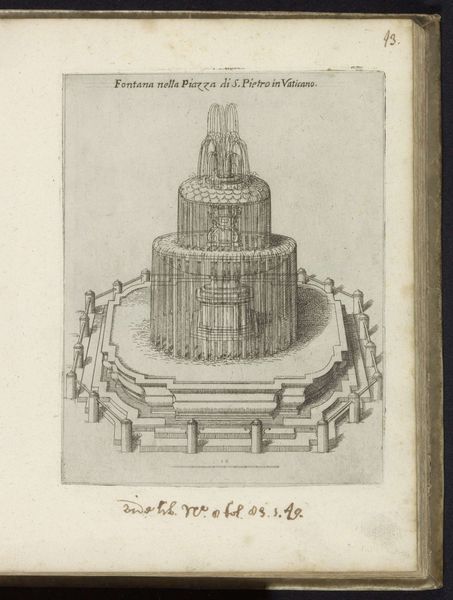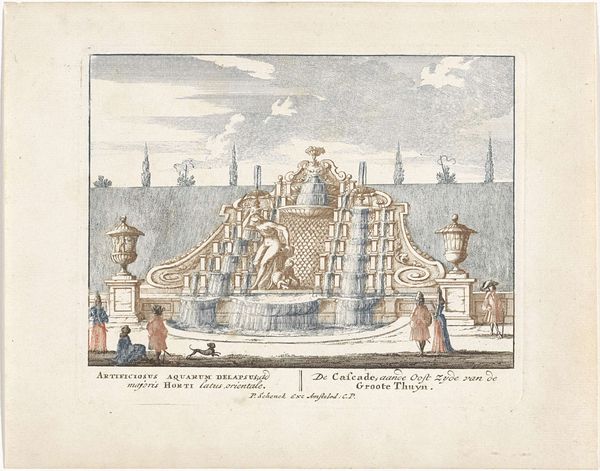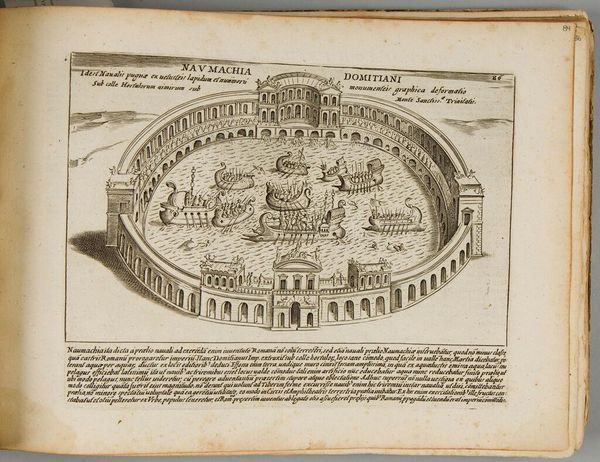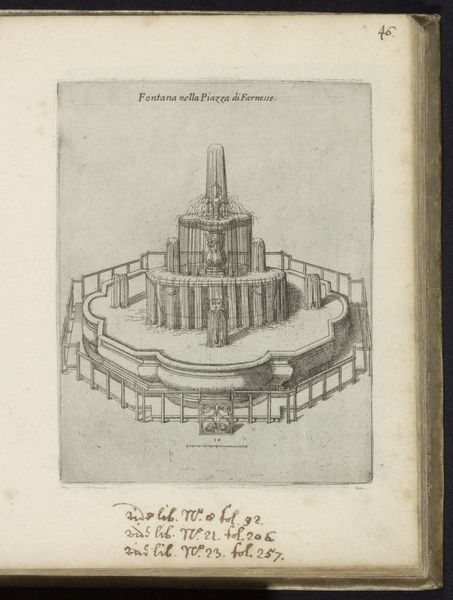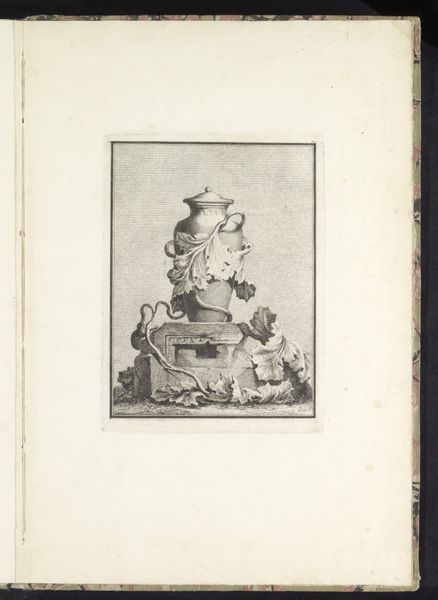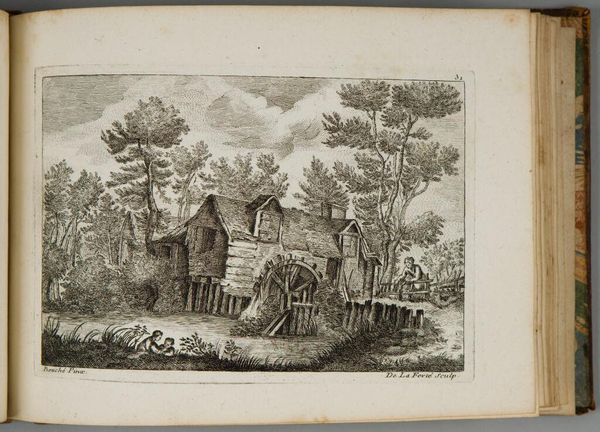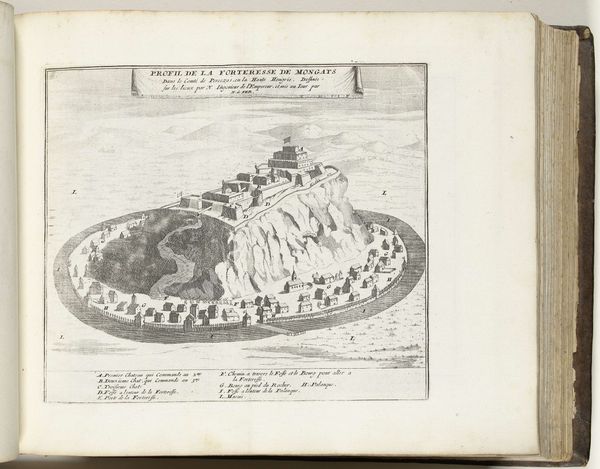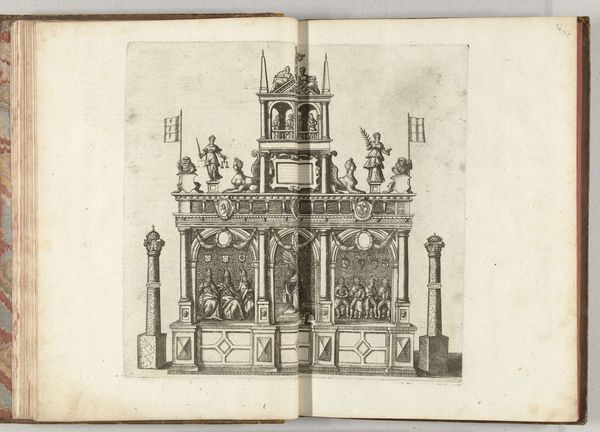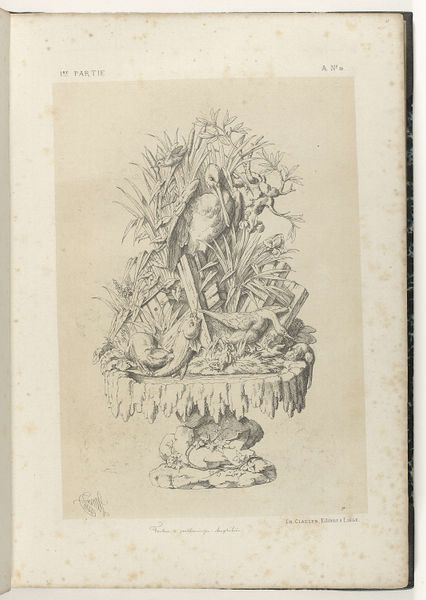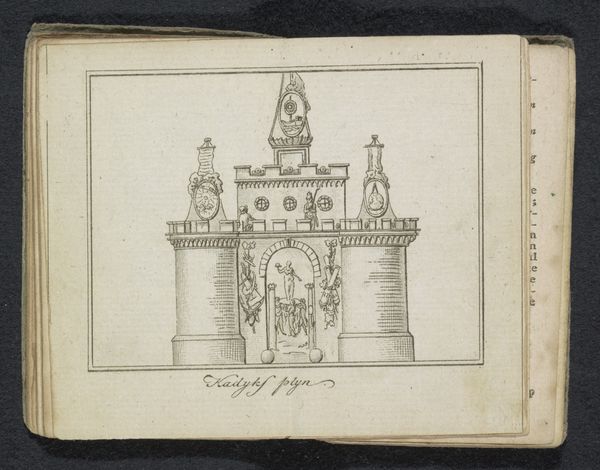
print, engraving
#
aged paper
#
toned paper
#
baroque
# print
#
old engraving style
#
landscape
#
pen-ink sketch
#
cityscape
#
engraving
Dimensions: height 195 mm, width 150 mm
Copyright: Rijks Museum: Open Domain
Curator: Here we have Domenico Parasacchi's 1637 engraving, "Rustieke fontein in de Belvedere tuinen te Vaticaanstad," depicting a rather fantastical fountain. What's your initial impression? Editor: Well, first off, it looks like something straight out of a dream. There's an odd juxtaposition of grandeur and playfulness, wouldn't you agree? That tiny ship sailing beneath such a massive, ornate structure really catches the eye. Curator: Precisely! These gardens were a place for popes to display both their power and their refined tastes. This print documents one of many constructed spectacles made to awe and impress visitors and cement their power and control of society and art. Editor: The symbolism here is rich. Fountains have always been potent emblems. Water, of course, signifying life, purification, and constant flow. But the aged paper adds another layer to it, creating the effect of nostalgia for the spectacle. What is no more… Curator: Indeed, consider how baroque art uses iconography. This particular fountain, festooned with naturalistic elements and capped with that bold eagle motif, projects dominance. The eagle would certainly invoke Imperial Rome. The landscape framing itself is deliberate. Editor: And there's a beautiful tension between the idealized, almost mythological fountain and the realistic rendering of that small ship, so minutely and yet deftly captured. It could even be seen as humanity bravely venturing forth under the watchful eye of established authority. Curator: Very astute. In looking at the ship's size we might ask ourselves who these images of the Vatican gardens were created for, for whom would that tiny ship mean something, how and where did they consume these representations of power and landscape? The art market was growing during this time and these images played an important role in making the city knowable. Editor: This has given me much to ponder. It’s more than just an old print; it’s a portal into the artistic and socio-political mindset of the time. Curator: It shows us how imagery and political intention intertwine, showcasing how art served a key function in shaping society and perception of power, wouldn't you say?
Comments
No comments
Be the first to comment and join the conversation on the ultimate creative platform.
